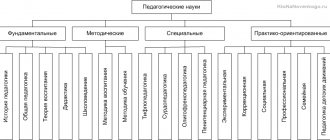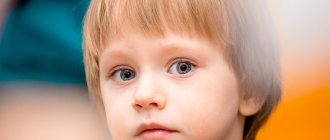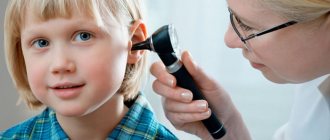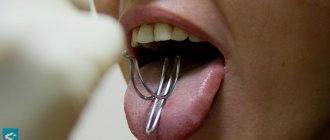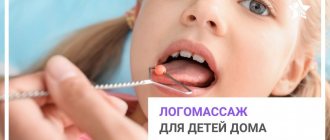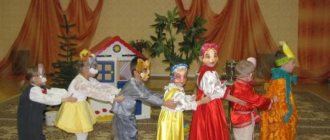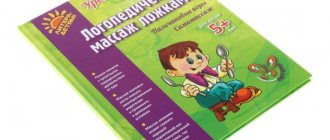Goal: to introduce parents to didactic games aimed at the formation and development of mobility of the articulatory apparatus, breathing, phonemic hearing and lexico-grammatical structure of speech. Establishing contact between participants. Creating a friendly atmosphere.
Tasks:
1. To convey to parents the importance of developing the mobility of the articulatory apparatus and breathing in children with general speech underdevelopment.
2. To help parents that didactic games develop phonemic awareness and prevent the occurrence of dysgraphic errors when learning to read and write, and contribute to the intensive development of the skill of reading whole words.
3. Show in practice how in a playful way you can consolidate children’s knowledge of the development of phonemic awareness, grammatical structure of speech, and coherent speech.
Logosharik doll , mirrors, background music, sea pebbles (dark and light, laces, pasta, wooden beads, pictures with words of different syllabic structures , cards with diagrams of the place of sound in a word; red, blue and green circles, ball.
Progress of the event.
Speech therapist : Hello, dear parents !
Imagine that today you are not serious, authoritative adults, but children of 5-6 years old. What did you want most as a child? Probably play! And it is right. After all, the leading activity for preschool children is play.
When playing, children are, first of all, captivated by the action of the game, it stimulates children's activity and evokes a feeling of satisfaction. Unnoticed by himself, without much tension, while playing, the child performs a didactic task. The didactic game also has a certain result, which is the finale of the game , where the achievements of each child are emphasized, and for the teacher the result is an indicator of the children’s success, the acquisition of knowledge and skills.
So you and I are going to play now. Unusual games - speech therapy . These games not only entertain, they help develop speech.
Speech therapist : To speak well, you need to train your articulatory apparatus. Logosharik will tell us what an articulatory apparatus is .
(The doll shows lips, teeth, tongue, upper and lower palate).
Articulation gymnastics:
1. “The frogs are smiling” (After counting the shells in the pond, the frogs smile. One, two, three, four, five - start counting too.)
2. “Trunk” (The elephant pulls its trunk up, he wants to get a nut. One, two, three, four, five - we must try again.)
3. “Hippopotamus” (The hippopotamus opened his mouth, the hippopotamus wants porridge. Feed the baby, he needs three buckets. One, two, three. The hippopotamus closed his mouth, the hippopotamus ate the porridge.)
4. “Robot” (The robot stretched in the morning, he smiled from ear to ear. He didn’t have time to lubricate it with grease and his smile became rusty)
5. “Horse” (A white horse gallops along a flat, smooth path. Clack, clatter, clatter - the hooves are knocking, the horse is racing far.)
6. “Cup” (Mom pours tea, quickly replace the cup. To prevent the tea from spilling, the tongue rises up.)
Breathing exercises.
To pronounce sounds correctly, you need a strong air stream. Children really like games to develop a long and strong air stream. Try it too.
Different tasks for three groups. (Blow into a tube onto a ball in the water. Draw geometric shapes with air felt-tip pens. Blow on the pinwheels).
Be sure to make sure that your cheeks do not puff up when exhaling.
Phonemic games .
In order for a child to pronounce sounds correctly, he must learn to hear them correctly. Not just to hear correctly, but to distinguish, analyze and differentiate sounds. This skill is called phonemic awareness.
A small child does not know how to control his hearing and cannot compare sounds. But a child can be taught this. It is especially necessary to develop auditory attention and phonemic hearing for children with speech problems. Sometimes a child simply does not notice that he is pronouncing sounds incorrectly.
The purpose of phonemic games is to teach the child to listen and hear. By regularly playing with your child, you will notice that the child has begun to hear himself, his speech, that he is trying to find the correct articulation of sound and correct defective pronunciation.
In the initial stages, we learned to listen to the sounds of the world around us. Game “Listen to the silence”, “What does it sound like?” and others. Today we will play with speech sounds.
1. “Catch the Sound”
Target. Development of phonemic hearing, the ability to isolate a given sound from a number of sounds, syllables , in words.
MAGAZINE Preschooler.RF
teacher-speech therapist 1st quarter category Khramtsova Elena Yuryevna teacher 1st quarter. category Tokareva L.A., teacher II quarter. categories Prilepskaya E.V. MBDOU "Kindergarten No. 12" Berezniki, Perm regionPurpose of the training:
Introducing parents to techniques for developing fine motor skills; development of a sense of unity and cohesion; acquiring skills to act in concert; development of communication skills; development of the emotional sphere.
Equipment and materials:
Magnetic board, 1 sheet of whatman paper with a drawn sun without rays, colored paper, scissors, glue, felt-tip pens, printout of the “Finger Steps” gymnastics version, clothespins, silhouettes of objects with missing details, counting sticks, images for shading, bright paper cap, tape recorder, musical recordings.
Progress of the training:
-Dear parents, we are glad to see you at the speech therapy training! Thank you for taking the time to study with us. Today we will introduce you to some finger games and exercises that activate speech activity, develop memory and thinking, and awaken creative imagination and attention. It’s not without reason that they say: “By developing our fingers, we develop speech.” And we will play together with the children!
(To the music, children enter the hall and stand in a circle.)
-Dear parents, come out and stand next to your children.
Game – introduction “Pass the cap”
Goal: formation of a sense of unity, cohesion, development of fine motor skills of the hands, activation of the activity of the speech centers of the cerebral cortex.
Progress of the game:
- Let's get to know each other, but not just like that, but in a special way. For this we will need counting sticks. Take one stick at a time. Look, my counting stick has a cap on it. I say my name and give my cap to the neighbor on the right. The neighbor on the right removes my cap with his counting stick (we don’t use our hands), says his name and passes the cap to the neighbor on the right, etc. So let's begin! (To the music, children and parents pass the cap to each other.)
- The cap returned to me, and you and I became a little closer to each other.
Game "Magic words"
Goal: development of fine motor skills of the hands, activation of the speech centers of the cerebral cortex, coordination of speech, movement and speech breathing.
- Shall we play some more? Let's warm up our fingers. Repeat all the words and movements with me.
Speech therapist reads
| Performed by children and parents | |
| Fingers are a friendly family, They cannot live without each other. | We rhythmically clench and unclench our fists. |
| This is the big one, and this is the medium one, Nameless and last Our little finger is a baby! Oh! You forgot your index finger! | Alternately massage the named fingers of the right and left hands. |
| So that the fingers live together, Let's connect them And perform the movements: | We alternate each finger on both hands with the thumb. |
| We'll show you the goat's horns And even deer antlers, And let's not forget about the bunny: We will lead with our ears! | We carry out movements according to the text. |
| To speak clearly You have to be friends with your fingers! | We alternate each finger on both hands with the thumb. |
"Finger Games"
Goal: development of fine motor skills of the hands, activation of the speech centers of the cerebral cortex, coordination of speech, movement and speech breathing.
- Let's find out what games you can play with your fingers. To do this, take a seat at the tables. (Children and parents sit at tables.)
— The first exercise is called “Frogs.” We clench and unclench our fists.
Two cheerful girlfriends
They don't sit for a minute.
Girlfriends jump deftly,
Only the splashes fly upward.
We clench our hands into fists and place them on the table, fingers down. We sharply straighten our fingers, the hand seems to jump above the table, and again clench our hands into fists.
— The next exercise is for the fingertips “Piano”.
Legs together, back straight.
We are sitting at the piano.
We are learning scales.
Legs together, back straight.
We hold our hands above the table and, in turn, lightly hit each finger on the table, as if we were playing scales.
— Exercise “Captain”. Thumb rotation.
Why is ours big?
Does he twist and turn his head?
He is the captain of the ship,
Studying the ocean.
We clench our right hand into a fist, extend our thumb up and rotate it in one direction, then in the other direction. We do the same with our left hand.
- Now let’s stretch our fingers. Exercise “Hooks”.
Here are two hooks interlocked,
Now we have a chain.
We will pull it.
To straighten the hooks.
We hook our index fingers into the lock and pull in different directions, changing hands.
— Exercise “Hole.” Rotation of fingers with emphasis.
Rotate quickly with your finger
And we press harder.
If you twist like this for a long time
You can drill a hole.
We clench our left hand into a fist, extend our thumb and press it onto the palm of our right hand. We make rotational movements in one direction and the other. We do the same with the right hand.
— Exercise for the wrist “Goose”.
This goose is home
For some reason I was walking backwards.
Here he is backing down the desk
He has such a character.
We perform the exercise standing. We place our palms on the table with the back side down, fingers facing us and lightly lean on them.
— Exercise for palms “Back”.
And now one palm
Let's turn it around
And let's clap a little
Let the other one rest.
Clap the back of your right hand on the inside of your left hand and switch hands.
Exercise with a pencil or pen “Going down the stairs.”
Goal: development of fine motor skills of the hands.
— We can use any objects to develop fine motor skills. For example, a pen or pencil.
Hold the top end of a student's pen or pencil vertically between your palm and the base of your thumb. Hold the student's pen in this position. Grasp the handle from below with your other hand. Continue to grab the student's handle alternately with both hands up and down. The movements of the palms resemble the careful descent and ascent of a ladder.
Exercise with clothespins “Something is missing!”
Goal: development of fine motor skills of the hands, activation of the speech centers of the cerebral cortex, development of logical thinking.
“Also, games with objects that can always be found in your home, for example, clothespins, are good for developing our fingers. There are objects with missing elements in front of you. For example, the sun without rays, a house without a chimney. Replace the missing piece with clothespins.
Game with counting sticks “Post a picture”.
Goal: development of fine motor skills of the hands, activation of the speech centers of the cerebral cortex, development of logical thinking.
— Counting sticks or pencils are suitable for our games. Using counting sticks, lay out any of the figures suggested here or come up with your own.
Game “Shade as shown in the picture.”
Goal: development of fine motor skills of the hands, activation of the speech centers of the cerebral cortex, development of logical thinking.
— Shading is very useful for the development of our fingers. Take the leaves and shade any picture you like according to the sample.
Speech game with the movement “Grandma bought herself a chicken.”
Goal: development of fine motor skills of the hands, activation of the speech centers of the cerebral cortex, coordination of speech, movement and speech breathing. - Now it’s time to rest a little. Everyone stand in a circle, repeat all the words and movements after me.
Grandma, we'll buy ourselves a chicken! (2 times) Chicken grain by grain - cluck-cackle! (Appropriate movements are performed)
Grandma, we'll buy ourselves a duck! (2 times) Ducky - ta-ta-ta-ta! Chicken grain by grain - cluck-cackle!
Grandma will buy herself a turkey! (2 times) Turkey poult - fulldy-buldy! Duck - ta-ta-ta-ta! Chicken grain by grain - cluck-cackle!
Grandma, we'll buy ourselves a pussycat! (2 times) Kitty - meow, meow! Turkey poult - fulldy-buldy! Duck - ta-ta-ta-ta! Chicken grain by grain - cluck-cackle!
Grandma, we'll buy ourselves a dog! (2 times) Little dog - aw-aw! Kitty - meow, meow! Turkey poult - fulldy-buldy! Duck - ta-ta-ta-ta! Chicken grain by grain - cluck-cackle!
Grandma, we'll buy ourselves a pig! (2 times) Piglet - oink-oink! Little dog - aw-aw! Kitty - meow, meow! Turkey poult - fulldy-buldy! Duck - ta-ta-ta-ta! Chicken grain by grain - cluck-cackle!
Grandma, we'll buy ourselves a little cow! (2 times) Little cow - torment, torment! Piglet - oink-oink! Little dog - aw-aw! Kitty - meow, meow! Turkey poult - fulldy-buldy! Duck - ta-ta-ta-ta! Chicken grain by grain - cluck-cackle!
Grandma, we'll buy ourselves a TV! (2 times) Announcer - la-la-la-la! Little cow - torment, torment! Piglet - oink-oink! Little dog - aw-aw! Kitty - meow, meow! Turkey poult - fulldy-buldy! Duck - ta-ta-ta-ta! Chicken grain by grain - cluck-cackle!
Speech therapy chant “Bunny” T.V. Ovchinnikova.
Goal: development of general motor skills, activation of the speech centers of the cerebral cortex, coordination of speech, movement and speech breathing. - In our work, you can also use logorhythmic chants. Repeat all movements and words after me.
I'm a little gray bunny, Coward - oh-oh-oh! I'm galloping, I'm skipping, I'm in a hurry, I'm in a hurry to get home!
Oh-oh-oh-oh-oh-oh! (4 times)
The wolf chased me, trembling with anger. But I wasn’t scared, I just took it and ran away.
Oh-oh-oh-oh-oh-oh! (4 times)
Now I won’t go for a walk without my dad and mom. Otherwise one day I will fall into the clutches of a wolf!
Oh-oh-oh-oh-oh-oh! (4 times)
Game "Finger Steps"
Goal: development of attention, coordination of movements, development of fine motor skills of the hands, activation of the speech centers of the cerebral cortex.
“I invite everyone to sit down at the tables again and continue our game.” Everyone in childhood loved to walk with “little men” fingers. So now we will walk first with the thumb and index finger of the right hand, then with the index and middle fingers, then with the middle and ring fingers, with the ring and little fingers. And you will see that this is not so easy to do.
Game "Magic Zoo"
Goal: development of attention, coordination of movements, development of fine motor skills of the hands, activation of the speech centers of the cerebral cortex.
— Did you like the game? Now imagine that you and I are in a zoo. Our hands have become magical and can turn into different animals. I will show various animals, birds and insects with my hands, and your task is to guess who it is and be able to repeat the movement.
(The teacher-speech therapist demonstrates in turn a butterfly, a goose, a dove, a snail, a fox, a dog, a frog. Children and parents guess and repeat the hand movements. If it is difficult for the child, the parents help form the correct position of the hands.)
Joint application “Sun”.
Goal: a feeling of unity between children and parents, instilling the skill of joint activities, developing fine motor skills.
— Did you like our games? Is everyone in a good mood? Let's keep it for a long time. Look, I have a sun drawn. Only he doesn’t have enough rays. And we will make rays for our sun from our palms. Let each adult trace the child's palm on colored paper with a pencil, and let your baby do the same with his mother's palm. Sign your palms, cut them out and glue them to the sun.
- Turn on the music, let's start working!
— This colorful sun will always illuminate and warm our group. And we are not afraid of any vagaries of nature, because in every ray there is a piece of your kind soul.
Parting
- Well, our first lesson together is over! You can play these games at home with the whole family! Through play, you can better understand your child and help him overcome existing problems in the motor sphere and speech development. And most importantly, you and your child will become closer to each other.
— We are waiting for you at the next lesson.
| < Previous | Next > |
Speech therapy training for parents
Scenario for family speech therapy training
"Gymnastics for mind and body"
The effectiveness of work in a speech therapy group largely depends on constructive interaction with the families of students.
In accordance with the requirements of the Federal State Educational Standard, parents (legal representatives) must be provided with assistance in raising children, protecting and strengthening their physical and mental health, developing individual abilities and the necessary correction of disorders and development. At the same time, work with parents should have a differentiated
approach, take into account social status, family microclimate, parental requests and the degree of interest of parents in the activities of the preschool educational institution.
The peculiarities of the modern family require detailed study of this link in the correctional and developmental process, to quickly respond to changes in the social composition of parents, their educational needs and educational requests.
One of the innovative areas in the system of work of families and preschool institutions in the modern educational process is the organization and conduct of speech therapy trainings. The peculiarity of this form of work is that in the course of joint communication, parents learn to interact effectively with the child, using the most significant forms and methods of activity for a given age.
An integrated approach to improving the pedagogical culture of parents will significantly diversify their relationships with children and optimize interaction with kindergarten teachers, allowing them to bring the correctional educational process to a qualitatively new level.
Life is a system of movements. Movement has a beneficial effect on the entire body and, especially, on brain activity. It has been proven that physical activity helps to increase mental performance, speech development, and the full formation of voluntary movements and actions that underlie human motor behavior. Many people are sure that thinking and learning are concentrated only in the head. On the contrary, our body plays a unifying role in all intellectual processes, from early childhood to old age. Kinesiology is a scientific and practical discipline that studies muscle movement in all its manifestations. The main idea that kinesiologists promote is that developmental work should be directed from movement to thinking, and not vice versa. Kinesiological exercises make it possible to use those parts of the brain that were not previously involved in learning and solve the problem of failure.
The development of a child with dysarthria from the first days of life differs from the development of normally developing children. They pronounce words illegibly, eat poorly, master self-care skills late and with difficulty, somewhat later than their peers begin to jump on one or two legs, run awkwardly, motor clumsiness of the hands is especially noticeable in art classes, they cannot learn to ride a bicycle for a long time, ice skating and skiing. Motor incompetence is clearly noticeable in physical education and music classes, where children lag behind in tempo, rhythm of movements, as well as in switching movements. In addition, in this category of children, the correct execution of complex motor acts is hampered by underdevelopment of static and dynamic coordination of movements. It is expressed in the presence of difficulties in maintaining a given position, tremor of the fingers, deviations of the body to the sides, and balancing with the hands.
